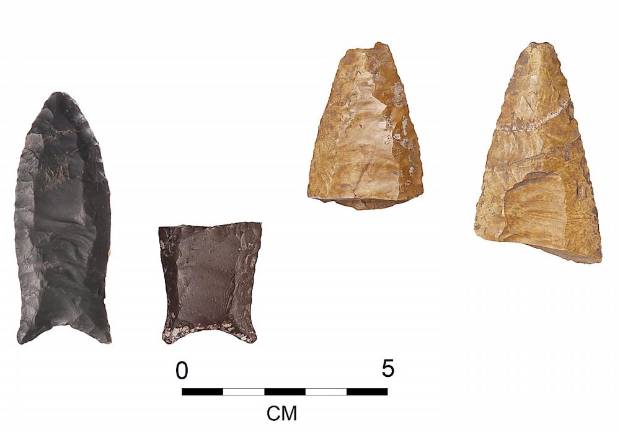Dutchess Quarry Caves appraised at $1.27M
Goshen. A coalition of concerned individuals and groups met to support the need to preserve the Dutchess Quarry Caves on Lookout Mountain in Goshen. The site has recently been appraised at $1,270,000. The sale was on the agenda for the Orange County Legislature’s Rules Committee on Wednesday.

The Dutchess Quarry Caves have recently been appraised at $1.27 million and the Orange County Legislature put the sale of the caves on the agenda for Wednesday’s meeting.
The matter of whether an Environmental Impact Statement will come before the Physical Services Committee. If it passes committee, it will go before the full legislature for final approval.
Recently in Chester, a coalition of concerned individuals and groups met to voice their concern over the need for preservation of the historic Dutchess Quarry Caves on Lookout Mountain in Goshen.
The press conference was organized by activist Mary Altobelli, Past President of the Chester Historical Society and Kathy Skafidas, President of Orange Environment. Many don’t know these caves are Orange County’s most important archaeological treasure; they are one of the oldest sites of prehistoric human habitation and activity east of the Mississippi River and their use has been dated back to between 12,400 to 15,000 years ago.
Prehistoric hunters used Mt. Lookout (on present-day Quarry Road) to search the then-submerged cedar swamp (black dirt) area in front of them for game, such as mastodon, giant beaver and caribou, which was butchered in the caves. Excavations of some caves in the 1960s provided evidence of human activity in the finds of over 30 tools, including spear points, and animal bones, which are now in the New York State Museum at Albany.
The caves and the land around them need to be preserved. They are in danger from the adjacent long-time mining operations which have already destroyed much of Lookout Mountain, including several other caves, and have carved a deep depression into the mountain, which must be constantly pumped to keep out water. The present mining company, Tilcon, wishes to purchase from the county additional land near the caves to expand operations to mine the limestone rock, which is crushed and used in roadbeds.
Activists say this cannot be allowed to happen or we will lose this irreplaceable site forever.
Dangers from mining are several. There are concerns that continued rock blasting will weaken and perhaps destroy the caves. The water problem is more complicated. The water table has fallen in the caves, which dries out the rock, further weakening it and there is also worry about the “lake” created by mining; is the pumping leading to the drop in the water table? If pumping stops, where will the water go? Will it undermine the foundation of the caves?
The county has allowed the site to be degraded. Many agree it is past time for a reclamation and site preservation plan to protect the caves for the future and for our understanding of the past.
Over the years many people have sought to preserve and study these caves. Much of their research can be seen on Orange County’s own website. The press release for the meeting stated, “Under former planning commissioner Dave Church, an exhaustive study of the caves was published in 2012, ‘Dutchess Quarry Sites National Register District- a management and conservation report’ (available on the OC website). This report echoes recommendations made in the past by many, including Orange Environment.”
The name “Dutchess Quarry Caves” derives from the original owner of the mine. The site has been mined since the 1930s. In the 1980s, Orange Environment, local archaeologists and others acted to preserve the caves with a 200’ buffer zone and restricted access
Orange County is now deciding whether to sell a portion of what’s left of Lookout Mountain to Tilcon for additional mining.
During this press conference, Orange Environment announced its opposition to additional mining on the site. They and other groups: historical, civic, archaeological and environmental are demanding a complete reclamation and preservation site plan for the caves.
Their reasons include:
The Lookout Mountain/Dutchess Quarry Caves are “are an unparalleled resource for County and the world. This a potential source of education and tourism opportunities for the future if an interpretive center, distributed educational kiosks, related curriculum and further research are developed around the caves (albeit not allowing further disturbance of them).”
These vulnerable caves should not be jeopardized through additional blasting, drilling and weakening of the thin remaining shelf they are perched atop of.
The Lookout Mountain caves are sacred to the Native Americans of our region who view the caves and the potential burials and objects they contain as their responsibility to protect, even if the county and mining companies have not.
If you want to help, contact your Orange County legislator at https://www.orangecountygov.com/903/Legislature. In the large black column on the left, you can click on “find my legislator” or “contact my legislator” (for a full list of names, phone numbers and email addresses).
Ed. Note: The writer and historian Patricia Edwards Clyne, in the chapter “Orange County’s Ice-Age Time Capsule” in her book “Hudson Valley Faces and Places,” called the Dutchess Quarry Caves “one of the most important archaeological sites in the northeastern United States—and one of the most endangered.”